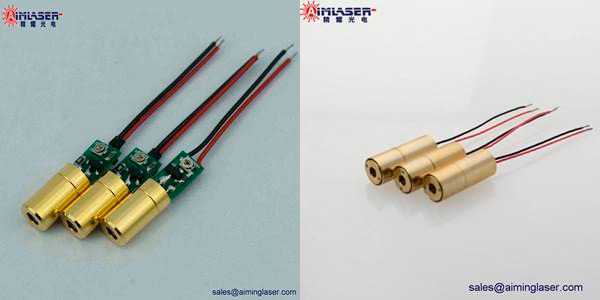Over the past few decades, high-power CW lasers have become a common tool in modern manufacturing, covering applications such as welding, cladding, surface preparation, hardening, brazing, cutting, 3D printing, and additive manufacturing. With the generation of high-power 10.6µm wavelength carbon dioxide (CO2) lasers and near-infrared 1064nm wavelength semiconductor-pumped Nd:YAG solid-state lasers, high-power CW laser technology has seen the first peak of development.

Due to its wavelength, carbon dioxide lasers are difficult to transmit through optical fibers, causing certain difficulties for industrial applications; while solid-state lasers are limited by their brightness and power amplification capabilities. These CW high-power fiber lasers typically operate at near-infrared (NIR) wavelengths within 1µm, which are fine for many applications. For example, it is suitable for machining steels with an absorptivity of over 50%, but is limited by the fact that some metals reflect 90% or more of the near-infrared laser radiation incident on their surface. Especially when welding yellow metals such as copper and gold with NIR lasers, the low absorption rate means that a lot of laser power is required to start the welding process.
Deep penetration mode welding results in a high absorption of the laser beam because the laser beam interacts multiple times with the metal and metal vapor as it travels through the material. However, activating a keyhole with a near-infrared laser requires considerable incident laser intensity, especially when the material being welded is highly reflective. And once a keyhole is formed, the absorptivity rises sharply, and the high metal vapor pressure in the molten pool by the high-power near-infrared laser can cause spatter and porosity, so the laser power or welding speed needs to be carefully controlled to prevent excessive Spatter spews out of the weld. As the molten pool solidifies, "bubbles" in metal vapors and process gases may also be trapped, creating voids in the weld seam. Such porosity weakens the weld strength and increases the resistivity of the joint, resulting in a lower quality welded joint. Therefore, NIR lasers are very challenging to process materials such as copper with absorptivity < 5% at 1 µm. In order to better process these high-reflectivity materials, methods such as increasing the material's absorption rate of laser light by generating plasma on the processed material have been adopted. However, because these methods limit material processing to deep penetration processes, thermal conduction mode welding of thin materials is not possible, and there are inherent risks of sputtering and controlled energy deposition. Therefore, existing laser systems with a wavelength of 1 µm have their limitations when processing highly reflective materials such as non-ferrous metals, as well as in underwater applications.
In order to develop the restricted application areas of these near-infrared lasers, new laser light sources must be investigated. In addition, in order to reduce greenhouse gases, new energy vehicles are replacing gasoline engines and internal combustion engines with electric engines. The use of a lot of copper in the construction of electric motors, especially power batteries, has created a huge demand for reliable copper processing solutions, and has an equally wide range of applications in other renewable energy systems such as wind turbines.
Today, high-power industrial fiber lasers have become the solution for high-brightness, high-power lasers that can be delivered over fiber. Today, fiber lasers have replaced CO2 lasers in the vast majority of applications and are effectively used in numerous industrial processing applications. Especially in recent years, it has become the workhorse of industrial lasers, such as laser welding and cutting, which has higher speed, efficiency and reliability than CO2 lasers.